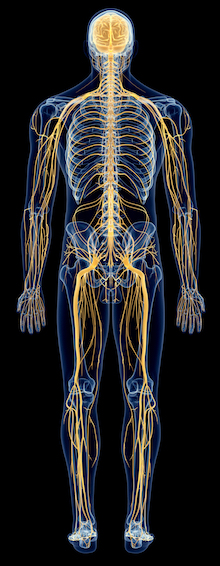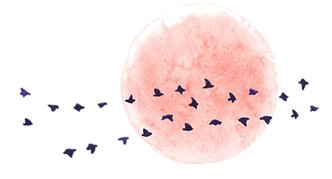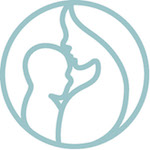Positive Body Awareness
Andrew Cook MSc RCST
Transformational Bodywork
 The Spine (including the neck)
The Spine (including the neck)

There are many medical (e.g. torticolis, scoliosis) and non-medical (e.g. wry neck, slipped disc) ways of describing different spinal problems.
...the bones are merely spacers in an elastic network of soft tissue...
However, a 2021 study showed that spinal degeneration detected by MRI has virtually no correlation to back pain over the following 6 years; and an earlier ad hoc study in Australia showed no correlation between immediate back pain and MRI/X-Ray spinal diagnostics for a random set of about 200 subjects. And from a Cranial point of view, most of these diagnostic labels are not helpful, because they assume that the position of the bones is in some way definitive of the cause of the problem. The Cranial approach to the musculoskeletal system is that it works as a Tensegrity structure - i.e. the bones are spacers in an essentially elastic network of soft tissue. So these different "types" of spinal problem are in 99% of cases actually caused by irregularities in the soft tissue matrix.
Therefore the position of vertebrae (the bones of the spine) is only indicative of which groups of soft tissues (muscles, fascia, viscera) might require attention.
If the condition is chronic, then the vertebrae may be deformed due to the less-than-ideal loading, and then there is an additional bony problem. But in these cases the underlying soft tissue problem can still be addressed, and then a structured programme of remedial movement may begin to restore the original shape of the bones of the spine.
I have applied CST to help almost every spinal condition, including :
- Spinal deformations and twists (e.g. toticolis and scoliosis). Recent research has shown that scoliosis is linked to a disturbance of the flow of cerebro-spinal fluid.
- "Slipped" and herniated discs
- Stenosis (narrowing of the vertebral canal)
- Trapped nerves (narrowing of the spinal root exits)
- Trapped nerves external to the spine (a common cause of sciatica)
- Whiplash
- Spina bifida occulta
- Recovery from spinal fusion operations
- Arthritis (both systemic and local)

CST is a safe and non-manipulative technique with an extremely low number of reported adverse side effects. It has been used by the University hospital in Graz, Austria for over a decade to help premature babies. A retrospective safety audit of all infants treated over that period showed absolutely no markers to indicate harm in any way. My clinical experience is that the body defends itself by tightening muscles if it is forced in any way. So all of my work is gentle enough to ensure that I am working cooperatively with the tissues of the body. This makes for far more comfortable, safe and efficient treatments. And the effects of treatment tend to be long-lasting. A 2016 study confirmed that CST has a very significant positive effect on neck pain, and a second study showed it is more effective than massage for lower back pain.
Each treatment is tailored to your individual needs, and so no two treatments are the same. The help I provide encompasses a broad range of techniques, from structural and lymphatic through to subtle Cranial and biodynamic approaches. I also apply and teach mindfulness and embodiment to provide a degree of body-mind integration - which also helps physical healing in many cases.




<< ¦ Top ¦ Menu ¦ Front page ¦ Body-Mind ¦ CST/Clinic ¦ Contact ¦ Site Map ¦ Search
all content © Andrew Cook, Norwich UK, 2021



